Artist Thomas Hastings (1778-1854) left a trail of early nineteenth century art in his wake as Collector of Customs for the British government 1819 -1853.
Before this, Hastings had trained as a surveyor in the army and served in India under his birth name, Thomas Barnett, rising to a captaincy by purchase before he resigned in 1811.1
By the time of his entry into HM Customs Service, where he worked in various places in England and Ireland, he was already an established artist. 2
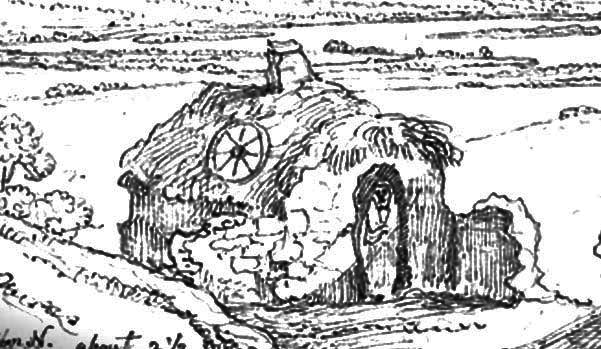
The earliest we can find him in the services of HM Customs is in Ramsgate, Kent, where in Dover Museum a number of his sketches of that town (after William Stukeley) are held.
Hastings had been working on a study of eighteenth century landscape painter, Richard Wilson (1714-1782). His etchings after Wilson included Lake Nemi With Two Friars, View of Tivoli, Virgil’s Tomb, The Bay of Baiae from Posilupo and Temple of Minerva Medica, Rome.3
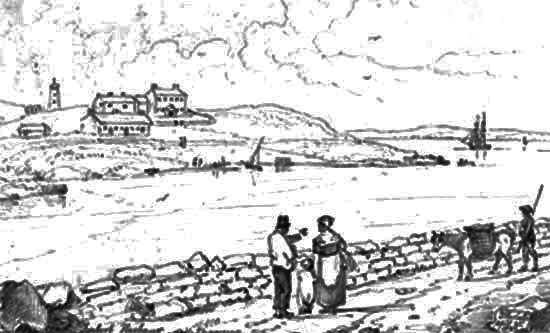
From 1825-1833, Hastings was based at East Cowes, Isle of Wight, where he resided at East Cowes Cottage. During this period he demonstrated an interest in and knowledge of archery when he founded, in 1829, the Society of Carisbrook(e) Archers at Carisbrooke Castle, patroness Lady Barrington. Soon after, he published an illustrated book, The British Archer (1831).4
In 1833, Hastings was in Falmouth; his artistic achievement there is recorded in works such as Lord Yarborough’s yacht, Falcon.5 Later in the 1830s he was appointed to Shoreham where he remained until he succeeded Mr Vanderkiste at Limerick in 1841. 6
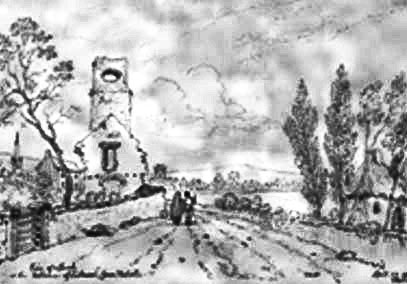
Soon after his arrival in Limerick city, Hastings produced Sketches in the South of Ireland, Limerick, etc.7 This work shows how Hastings found time to venture into Kerry where he sketched scenes in Tralee, Listowel, Tarbert and Killarney.8
He also etched a ‘portrait of St Patrick who was a gentilman’ which included part of a descriptive song of the time about Paddy’s visit to London:
A friend took me in to the Parliament House
And there sat the speaker as mum as a mouse
For in spite of his name won’t you think it a joke too
The speaker was him whom they all of them spoke to?
In 1844, Hastings left Ireland for Gloucester, where he replaced Thomas Jenkins, and where he remained for the rest of his years.9
Hastings was twice married, first to Mary Monins who he wed in Canterbury Cathedral on 2 September 1807.10 Thomas and Mary had a daughter, Mary Albinia (1813-1890). Mary married barrister Rowley Lascelles Esq (1807-1895) in December 1835 at St Bees, Cumberland.11
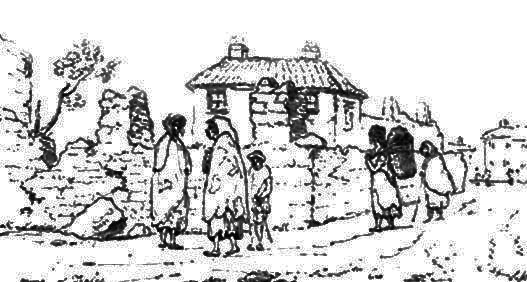
Thomas Hastings married again shortly after his arrival in Ireland to Susanna, eldest daughter of Richard Phillips Esq (1780-1829) of Gaile House, Co Tipperary and Foyle, Co Kilkenny.12 The marriage, which took place in Mogorban (Magorban) Church, Tipperary on 28 Oct 1841, was performed by the Archdeacon of Aghadoe, James William Forster.
Thomas Hastings died in May 1854. He was laid to rest in the parish of St Mary de Lode, Gloucester, on 22 May 1854.13 Susan died on 14 January 1863 at 55 Lower Baggot Street, Dublin and was buried in the churchyard at Gaile. An oil portrait of Susan exists, artist not known.14
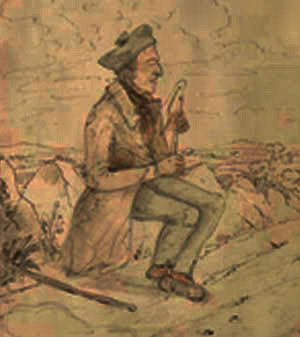
____________
1 He was born Thomas Barnett, son of a lawyer, but in 1812 he (and his brother Edward, also a lawyer) changed his name to that of his maternal great-grandmother, following the conviction of his father for perjury. Reference ‘Captain Thomas Hastings (1778-1854) His Full Identity Revealed’ by Marianne A Yule, The British Art Journal, Vol XVI No 2 Autumn 2015, pp56-69.
2 He exhibited works at the Royal Academy London in 1813 and 1821 and at the British Institution in 1823. The latter work at the Royal Academy, entitled 'Painted from a Sketch Taken During a Storm off the Cape of Good Hope' is held at Royal Museums Greenwich (http://collections.rmg.co.uk/collections.html#!csearch;searchTerm=Thomas_Hastings). He was also an associate of the Liverpool Academy.
3 Etchings from the Works of Ric Wilson with Some Memoirs of his Life &c (1825) by Thomas Hastings Esq Collector of His Majesty’s Customs. Further reference to Richard Wilson, http://www.richardwilsononline.ac.uk/.
4 A number of his sketches of the Isle of Wight was published in the Isle of Wight Gardens Trust autumn newsletter (2017) edited by Helen Thomas.
5 http://cornwallartists.org. A composition from the Devon area, ‘Sidmouth Beach, Devon Looking West With High Peak and Peak Hill’ dates to 1805.
6 Vanderkiste was appointed to Plymouth.
7 The work, dated 1841, is held in the National Library of Ireland. His sketches include scenes of pre-famine Limerick such as ‘Wellington Bridge Limerick from the Custom House Quay’, a ‘View of part of Limerick with the cathedral from Wellesley Bridge’, Castle Troy, New Castle and Rockbarton.
8 The sketches include ‘Memo of Tralee’ September 1841, views of Tralee mountains and the harbour in Tarbert, the castle and old protestant church in Listowel and a view of the entrance to the Gap of Dunloe and Carrantuohil mountain, Killarney.
9 The last will of Thomas Hastings is held in the national archives UK.
10 In this respect, it is worth noting that Hastings is probably responsible for Illustrative Views of Canterbury Cathedral. From Drawings by Hastings (1826).
11 Mary and Rowley had a large family including Arthur Hastings Lascelles (1839-1902).
12 Susan’s mother was Jane, daughter of John Godfrey of Beechmount, Co Tipperary.
13 The will of Thomas Hastings of Hillfield Parade, Gloucester is held in the National Archives, UK (PROB 11/2193/189). My thanks to Marie Wilson for research of Hastings’s death.
14 Thomas drew a number of likenesses of Susan, which can be seen in his Sketches in the South of Ireland, Limerick, etc (1841) held in the National Library of Ireland.


